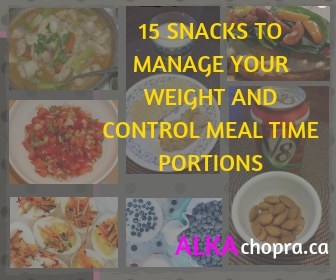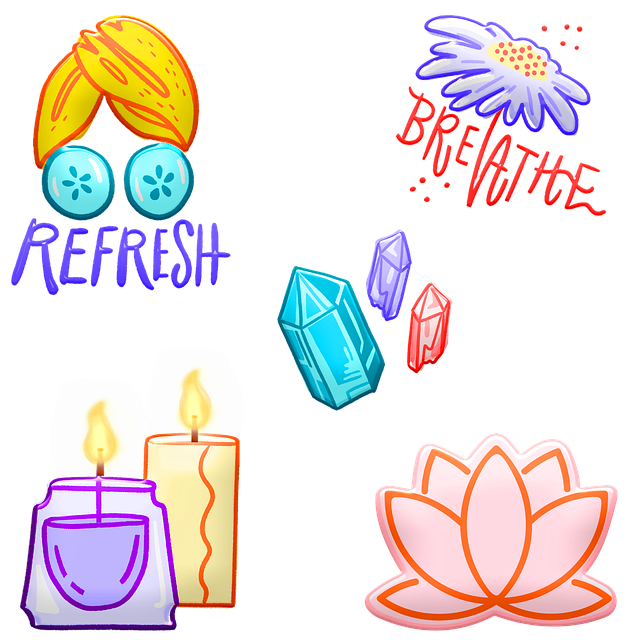Let me share a silly joke with you: A patient goes to the doctor with a stomach ache. The doctor assesses the patient and says that he needs to eat less and that the pain is due to overeating. The doc then suggests some meals that the patient should be eating. Before leaving the patient asks the doc: the suggestions that you have provided are to be eaten before a meal or after meal!!!! Say what????????? This is how several people snack. People forget that a snack is snack, and not a meal. And,unfortunately we do not have a second stomach for our snacks. I wish we did! So it is extremely important that we make smart snack choices that make us feel full and that we do not pack on pounds with the snack choices we make.
To begin with I need you to understand that healthy snacks play an important role in:
- Weight management by preventing overeating at meal times.
- Stabilize blood sugar levels and prevents any spikes thus having a positive effect on weight management. This is especially helpful for individuals living with diabetes.
- Meet your nutrient needs for the day. As an example if you did not eat vegetables at lunch but snacked on them you are golden.
- Curbing cravings: it has been proven when you have full stomach the cravings are reduced. Snacks prevent the body going into famine mode that slows down the metabolism making it easier to gain weight.
- Keeping you in a good mood. Healthy snacks provide you with the much needed energy consistently through the day. So you can focus better and your mood remains good.
Now that you are pretty clear that you must make healthy snack choices, you may wish to know what types of snacks should you chose. Well read on………….
- Avoid carbohydrates as snacks as much as you can: Save the carbs for you main meals so feel satisfied and content after you have eaten your lunch/dinner. Not being content and satisfied after eating your main meals is one of the main reasons why people choose unhealthy snacks after dinner. And these snacks are usually carb snacks, with no portion control. The result = weight gain.
- Choose Low Glycemic Index snack foods more often: Glycemic Index (GI) is a scale that ranks carbohydrate rich foods based on how much they increase blood glucose levels about 2-3 hours after eating. The GI uses a numbering system to identify foods as low GI (less than 55), medium GI (55-70) or high GI (more than 70) compared to glucose which is 100. Foods with a high GI are more quickly digested, and cause a larger increase in blood glucose, than foods with a low GI. Foods with a low GI are digested more slowly and do not raise blood glucose as high, or as quickly, as high GI foods. You can read more about glycemic index right here.
- Try to have snacks that include 2-3 foods groups: When you combine 2-3 food groups for your snacks you get 2 benefits:
- Benefit of feeling fuller and content that leads into controlled portions at meal times. For example if you were to have fruit only Vs fruit + hummus or peanut butter or even cheese. You would feel fuller and more content with the 2nd option. That is because of the effect of the fat and protein on hunger. If you have not given it a try, go ahead and try it. Post your experience in the comment box below.
- The benefit of keeping your blood sugar levels stable. When you keep your blood sugar levels stable you help not only prevent Type 2 Diabetes and other chronic diseases, you will also notice that you have more energy levels and feel more satiated/content between meals. Food combinations that allows you to maintain stable blood sugar levels will also help you feel less hungry and reduce your cravings for unhealthy foods. You will also improve your metabolism with the foods you choose to eat, which is key to making weight loss and maintenance easier.
4. Always include protein as one of your food group when choosing your snacks: According to a 2004 review article published in “Journal of the American College of Nutrition, protein is the best nutrient to make you feel more satiated and less hungry until your next meal, and it also contributes to raising your metabolism. Aim to combine low-glycemic carbohydrates and protein as your snack choices. This will will keep your blood sugar levels stable and increase your metabolism hence maintaining your weight or even losing if that is what is you are trying to achieve.
5. Stay away from 100 calorie snack packs: This is one way of the food industry trying to make money and as consumers we get sucked into this rabbit hole. Be true to yourself, can you stop at just one pack? Some of you may disagree with me and say that you are able to stop after one!. That is excellent! For most people, they are not able to stop at 1 pack. And that is the problem. Research published in the Journal of Consumer Research found that smaller “snack” packages encouraged participants to eat nearly twice as much, often without hesitation, than people who ate from larger packages. So, the purpose of 100 calories/bag is lost. A strategy that you could implement is pairing the 100 calorie snack pack with a protein or a good fat. For example, if you are having chips, perhaps adding 15 almonds will help in reducing the number of 100 calorie bags you might land up eating. The other problem with 100 calorie snack packs is that most of them have do not contain hunger controlling nutrients. Hence combining them with protein or good fats is a good strategy.
6. Avoid drinking your snacks: The biggest mistake! When you are hungry avoid drinking that latte or frappucino. These drinks are loaded with calories, are high glycemic index sugars and fats. The perfect formula to an exploding waist line! The drink will provide temporary satisfaction, you will load on 500 – 1000 calories with only a negative after effect. You can read more about sugary drinks in my blog post here.
7. Think of soups as snacks: When you go to a restaurant, you may order soup as an appetizer, right! So why can’t a soup be a snack? Soups (the not so creamy ones) make a nutritionally balanced snack. Pair with some melba toast or crackers – perfect combination. Give it a try and let me know how did it do. Post in the comment box below!
8. If you have a sweet tooth, count the dessert as your snack: Your desserts also contribute to your total calorie intake. There is no separate stomach for you desserts. If having a dessert is absolutely necessary for you, you may want to reduce your rice/paste intake by ¼ or ½ or your bread to 1 slice rather than 2 or 3. Increase your vegetable intake – eat them first. This way you will be able to incorporate the dessert into your daily meals. Do you have any other trick? Share in the comment box below!
9. When watching TV either avoid snacking completely or have only portion of a healthy snack: Similar to the dessert trick make room for the night time snacking if that is your way of relaxation. Better still have 1 portion of the snack and go brush your teeth. I can guarantee you will be very lazy to go and brush again if you snack again.
10. Plan your snacks just as your meals: You eat your meals right. Same way you eat your snacks! So, just as you plan your meals, plan your snacks. If not you will be hunting the whole house for some snacks,, and most often they land up to be not the healthiest ones. Next when you go grocery shopping include snacks as part of your grocery list. If not, make sure you pick up 2 types of snacks/week.
11. Include at least 2 snacks during your day: As I have mentioned above that snacks can help you manage your hunger, thus control your weight. It is a good idea to incorporate 2 snacks/day. Try to eat your snack after 3 hours of your main meal. You can have 1 snack at around 10:30 – 11am and the other one around 3-4 pm. This will help control your hunger at dinner. You should be aiming to eat ⅔ rd of your total calorie intake for the day by around 3 pm. This way your calorie intake until dinner is much more controlled and when you reach home from work you are not starving.
12. Limit the calories for snacks between 100- 250: Ideally each snack must vary between 100- 250 calories and 500- 600 calories for each of your main meal depending upon your age, height and weight. Try to stick to these guidelines as much as possible. This will help you manage your weight. If you need more guidance then consult a Registered Dietitian who can individualize recommendations for you.
Now tell me what is/are your favorite snack combinations? Post in the comment box below.


